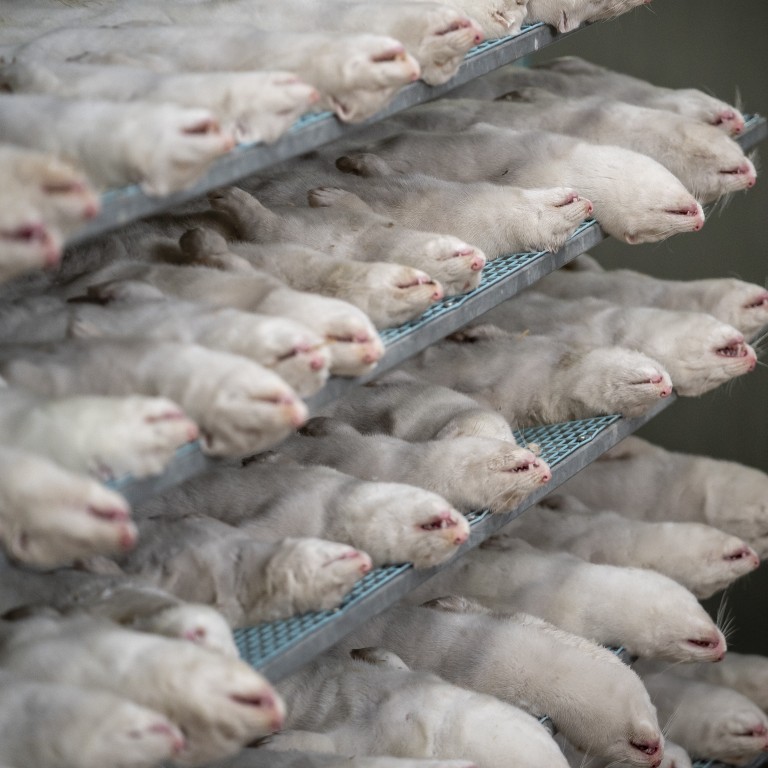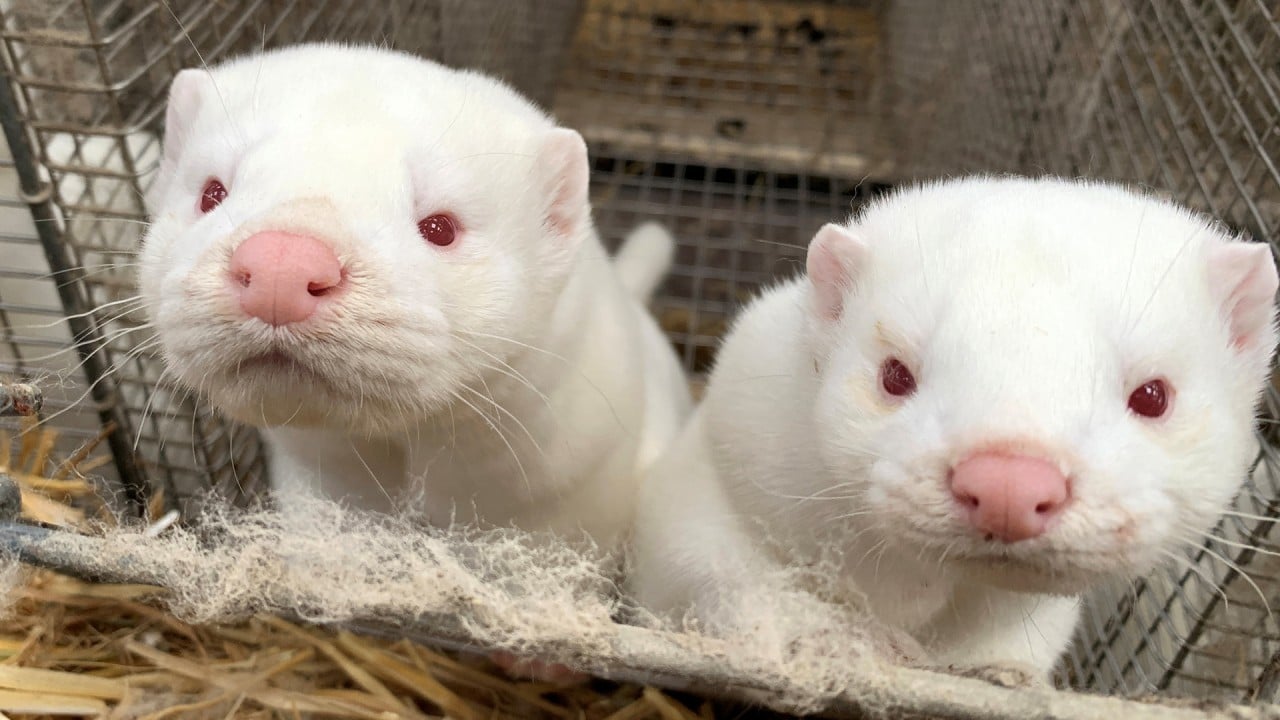
Coronavirus mutation in minks could threaten vaccine efficacy
- Denmark said that a mutation of the virus had jumped from minks to humans and infected 214 people
- The Scandinavian country has warned the new strain could undermine the effectiveness of any future vaccine
Fast-forward to November, and Frederiksen’s stance has radically changed. She’s announced plans to kill Denmark’s entire mink population – which, at 17 million, outnumbers humans in the country by a factor of three.
The news has caught the attention of health officials across the world after Frederiksen warned that certain strains of the coronavirus – having apparently jumped from mink back into humans – developed mutations that could undermine the efficacy of any vaccines.

01:44
Denmark to cull all 15 million minks on fur farms to contain spread of mutated coronavirus
Scientists reacted with plenty of head scratching at first, along with calls to see some supporting evidence from the Danes backing drastic measures that will cripple the country’s fur industry.
On Friday, officials said they’d shared the entire genome sequence of at least one mink-related strain of the coronavirus. That was enough to convince some outside researchers that Frederiksen wasn’t overreacting.
“It would be nice if it could be confirmed first in another laboratory,” Eskild Petersen, an infectious diseases professor at Aarhus University in Denmark, said in an interview. “But this is an evolving public health emergency. You have to act, and that’s what the government has done.”

02:38
Chinese Covid-19 vaccine developer Fosun Pharma optimistic about progress on mRNA jab
In total, Danish officials have detected 214 cases of people infected with a mink-related strain of the virus. That’s after scientists completely sequenced a pool of 5,000 Danish patient samples from recent months. Officials expect confirmed linked to the outbreak in the animals to rise in coming weeks as they fully analyse more than 30,000 other samples from that period.
The mink-related virus strains fit in five different clusters, Danish authorities said. Within those groups, seven different mutations have occurred to the virus’s spike protein, the portion that sticks out of the pathogen’s shell and allows it to infect healthy host cells.
That’s significant because most of the leading Covid-19 vaccine candidates target the coronavirus’s spike. The aim is to induce the body to raise protective antibodies against the spike that block infection.
One mink-related strain of the coronavirus has four different alterations in the spike protein genes, officials said. That virus was detected on five different mink farms in Denmark’s north and in the samples of 12 people, only four of whom were directly connected with a farm, authorities said.
North Denmark in lockdown as minks ordered to be culled
That’s one reason to believe that some mink-related virus strains are transmitting from people to people, the officials said.
The decision to kill all of Denmark’s mink has been a long time coming. In June, Denmark registered the first case of coronavirus at a farm where the animals are raised, in the country’s northwestern region. Early tests suggested that humans and animals were spreading the virus to each other. The virus initially spread to two other farms and herds at all three were culled.
In August, the coronavirus was detected at a fourth farm. Rather than culling the mink, the government changed its strategy and tried to contain the spread through isolation. Eventually, though, the virus spread to a total of 216 farms in the following months, Danish officials said. The government’s efforts to contain the spread had failed.
Then on Monday, researchers at Copenhagen’s Statens Serum Institute received lab results that many had long feared. A mink-related coronavirus appeared to be less affected by the Covid-19 antibodies from several people who’d previously been infected.

The institute told government officials on Tuesday that continued mink breeding in Denmark could increase the risk of more mutations that might undermine the efficacy of Covid-19 vaccines being developed. Experts said further study is needed.
“The true implication of the changes in the spike protein have not yet been evaluated by the international scientific community and are thus unclear,” said James Wood, head of the department of veterinary medicine at the University of Cambridge. “It is too early to say that the change will cause either vaccines or immunity to fail.”
Frederiksen herself hails from Denmark’s northwest, where mink farms abound. Her government’s decision to cull the entire mink population has caused outcry in the region, where, among other things, thousands of jobs are at stake.
Coronavirus vaccine race: where are we and how far?
At Wednesday’s press briefing, Frederiksen addressed the country’s mink farmers directly: “You’re losing your life’s work, which in some cases has been passed down through generations. The government is well aware that this is a day of mourning for those of you who work in this industry.”
But the situation is “very, very serious,” she said. “Not just for Denmark, but for how the whole world handles the coronavirus.”
Meanwhile, the World Health Organization said the US, Italy, the Netherlands, Spain and Sweden are the other nations to have discovered Covid-19 in minks.
Britain on Saturday banned entry to all non-resident foreigners coming from Denmark after the mutation linked to mink farms was found in humans.

